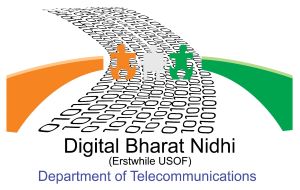
Guidelines for schemes to support PILOT Proposals towards utilization of BharatNet:
- Indian entities who are eligible under the TTDF guidelines, are eligible to apply for pilot testing of innovative technological and commercial solutions that shall help in proliferation of rural connectivity in India.
- The competent authority as per TTDF guidelines shall evaluate all the proposals and shortlist the proposal for TTDF grants.
Salient features of the Pilot Scheme:
- The agency for pilot testing of technology, business model or any other aspect relating to provision of broadband services in rural areas would be eligible, if the proposal is innovative.
- Duration of the project will be 1 year.
- The ownership of the infrastructure created under the pilot proposal scheme shall rest with the Government or its nominee organisation.
- The payment milestones for funding by USOF will be linked to the progress of the project
- On completion of the pilot project, an impact assessment/ evaluation of the project by an independent agency will be done. The cost of assessment/ evaluation to be made part of the total project cost to be paid directly by USOF.
- The pilot deployment presumes availability of technology- ready for deployment. It will not be used for testing of technology for research or development process of field trials or for development of new technology. The support will be given only for pilot deployment for the purpose of technology evaluation and not for actual procurement of the technology.
Selection Process USOF will evaluate all the proposals received up to the last date as per TTDF guidelines based on following criteria:
- Uniqueness of the pilot proposal
- Current stage of proposal should be at TRL 7. Proposal should be ready for TEC certification of Technology/Equipment during the pilot period.
- Underlying Innovation
- Availability of competing commercial technologies / solutions built on other technologies
- Reasonability of the estimated cost for pilot deployment sought
- Viability of technology for scale up for the wholesome problem across geography or across the value chain
Technology areas of Pilot (All Pilot proposals will be done in GPs utilizing Infrastructure of BharatNet):
- FSOC :
Free-Space Optical Communication (FSOC) is a wireless communication technology that uses light to transmit data through the air, typically in open space or vacuum, without the need for physical cables or fiber optics. FSOC employs modulated laser beams to establish high-speed data links between two points, enabling fast and secure data transmission
- E-BAND :
E-Band refers to the frequency range within the electromagnetic spectrum that spans from 60 to 90 gigahertz (GHz). It is also known as the millimeter wave band. E-Band technology has applications in various fields, including telecommunications, wireless communication, and radar systems age.
- ULTRA BAND :
Ultra-Wideband (UWB) is a wireless communication technology that utilizes a wide frequency range to transmit data over short distances with high precision and low power consumption. UWB signals have extremely short and rapid pulses, allowing for accurate localization, tracking, and data transfer without interfering with other wireless systems
- UNLICENSED BAND :
An unlicensed band, also known as an unlicensed frequency band, refers to a portion of the radio frequency spectrum that is available for use by the public without requiring a specific license from a regulatory authority. These bands are open for anyone to use for various wireless communication purposes, provided they adhere to certain technical and operational rules set by regulatory agencies
- 5G FWA :
5G Fixed Wireless Access (FWA) refers to a wireless communication technology that uses 5G networks to provide high-speed internet connectivity to homes, businesses, and other fixed locations. Unlike traditional mobile 5G, which focuses on providing mobile connectivity to devices like smartphones, 5G FWA is designed specifically for stationary or fixed locations and is one of the use cases of 5G
- V-BAND :
V-Band, also known as the 60 GHz band, refers to a specific portion of the radio frequency spectrum that spans frequencies from 57 GHz to 66 GHz. It is a part of the microwave frequency range and is used for various wireless communication and networking applications, particularly for high-speed, short-range communication
- INDIGENIOUS 5G :
"Indigenous 5G" typically refers to the development and deployment of 5G technology using domestically developed or produced components, infrastructure, and expertise within the country. It signifies our ability to create and implement 5G networks and services using our own resources and capabilities, thereby reducing dependence on foreign technologies and vendors
- VSAT :
VSAT (Very Small Aperture Terminal) technology plays a crucial role in extending communication services to remote and underserved areas, providing reliable connectivity for various applications ranging from internet access to business networks and emergency communication. Several public applications i.e. education contents can also be broadcasted using the VSAT
- LEO / MEO :
Low Earth Orbit (LEO) refers to the region of space closer to Earth's surface, where satellites orbit at relatively low altitudes. LEO satellites have diverse applications and are increasingly utilized for communication, Earth observation, scientific research, and navigation, often in the form of large satellite constellations aimed at providing global services.
Medium Earth Orbit (MEO) refers to the region of space between Low Earth Orbit (LEO) and Geostationary Orbit (GEO). MEO satellites are used for navigation, communication, Earth observation, and other applications, with global navigation satellite systems (GNSS) being one of the most prominent uses of this orbital region
- ANY OTHER TECHNOLOGY (SUO-MOTU)
Note: Proposals not following the format indicated will not be considered. Last date of submission has been extended to 31st October 2023








